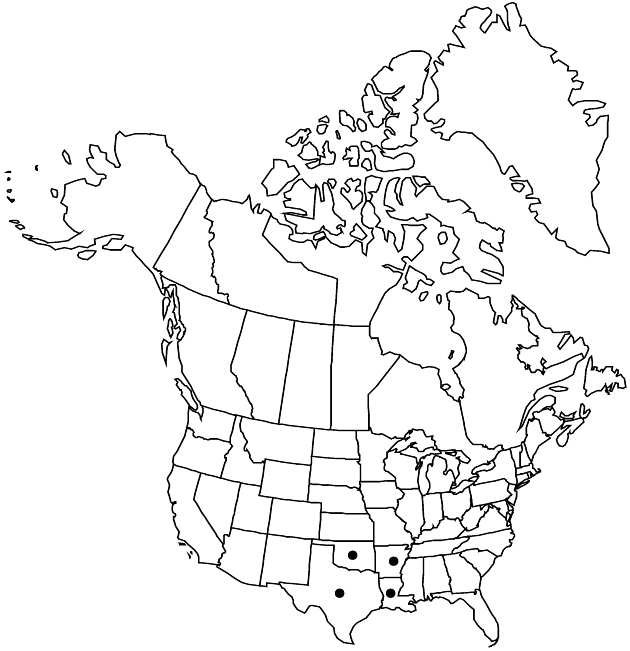Diaperia candida
Gen. Pl. 2: 298. 1873.
Plants grayish silvery, 3–25 cm, densely sericeous. Stems mostly 1; branches proximal or none. Leaves: largest 10–18 × 2–3 mm; capitular leaves subtending glomerules only, or sometimes also hidden between and surpassed by heads. Heads proximal and distal, in spiciform or racemiform arrays, ± spheric, 1.5–2 mm, heights ± equal to diams. Receptacles ± spheric, 0.3–0.5 mm, heights ± equal to diams. Pistillate paleae scarcely imbricate, longest 0.9–1.3 mm. Bisexual paleae mostly 1–3, apices incurved, ± involute, gibbous. Functionally staminate florets usually 0. Bisexual florets 3–5; corollas protruding from heads, ± zygomorphic, 0.5–0.9 mm, glabrous, lobes unequal (1–2 enlarged). Cypselae rounded, ± terete, mostly 0.5–0.6 mm (bisexual slightly longer). 2n = 14.
Phenology: Flowering and fruiting late Mar–early Jun.
Habitat: Open, dry, deep sandy soils, oak and pine woodlands, prairies, coastal areas, sometimes disturbed sites (fields, lawns, road beds)
Elevation: 10–400 m
Distribution

Ark., La., Okla., Tex.
Discussion
Diaperia candida is the most restricted of the three species, occupying most of eastern Texas (including the coast) and extending to adjacent corners of southeastern Oklahoma, southwestern Arkansas, and northwestern Louisiana.
Selected References
None.